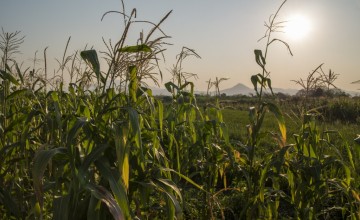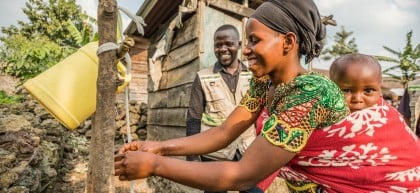
Knowledge Hub
Harnessing the data revolution in the fight against hunger

By using available data to focus attention on where the need is greatest, we can ensure that the world’s best expertise is brought to bear on the world’s worst problems.
It’s easy to consider the terms ‘hunger’ and ‘data’ unrelated. It’s imperative to understand that they’re not. Last year, during the 73rd United Nations General Assembly, world leaders came together to find innovative ways to end hunger. One of the seventeen UN Sustainable Development Goals – the blueprints to achieving a better and more sustainable future for all – is reaching ‘zero hunger’ by 2030, but due to factors such as climate change, gender inequality and conflict, there’s still a long way to go. A profound change is needed if we are to feed the 821 million people who are hungry today and the additional two billion people expected to be undernourished by 2050. And what is that change? How we use data.
An unlikely solution
‘Data’ has been a bit of a buzzword over the past few years. With the Cambridge Analytica scandal and GDPR (General Data Protection Regulation) coming into fruition, the ‘D’ word can simultaneously send chills down spines and offer relief in knowing that, at last, your personal details are relatively safe. But few of us thought that it would be adopted as one of the main tools in the fight against hunger.
Advances in technology are creating data at unprecedented levels of detail and speed, turning the stories of people’s lives into numbers every minute of every day across the globe. But a seemingly distressing insight such as this need not cause us to despair for the detached state of the world we live in. It means that there is more knowledge available to humanity than ever before. The Global Partnership for Sustainable Development Data organisation was established to help stakeholders and organisations across countries and sectors fully harness the data revolution for sustainable development, using this new knowledge to improve lives and protect the planet. Their vision is ‘a world where the opportunities of the data revolution are available to and for all of humanity, as a force for improving life for all people, everywhere.’ And, to achieve this, they suggest we work together towards a world where data is being used more openly, effectively, and efficiently by us all. Certainly, data is a digital divide itself, but there are ways of turning it into a tool to ensure no one is left behind.
The data upsurge will predominantly be harnessed to increase sustainable food production and improve farmers’ livelihoods (the top players in feeding the world’s hungriest people). For example, the “50 X 2030” initiative is an ambitious effort to conduct regular surveys of farming households in fifty low and lower-middle income countries by 2030—and then make the data, combined with other information sources, widely available. There are 500 million struggling farmers around the world – better data could help them double their incomes and produce more food, and in turn, get us closer to achieving zero hunger by 2030. By using available data to focus attention on where the need is greatest, we can ensure that the world’s best expertise is brought to bear on the world’s worst problems. We can transform people’s lives for the better.
What’s in a name?
So, don’t let the ‘D’ word scare you. When we say data, we really mean knowledge, wisdom, and learning from each other; it’s an endeavour to carry out regular surveys of households living in poverty to better understand their needs, and it’s a way of remembering that behind those big numbers are real people with histories, families and hopes and dreams. Fifty countries and partners will invest in data in this way meaning we can help the humans behind the hunger statistics so that we have a better chance of reaching zero hunger by 2030.



